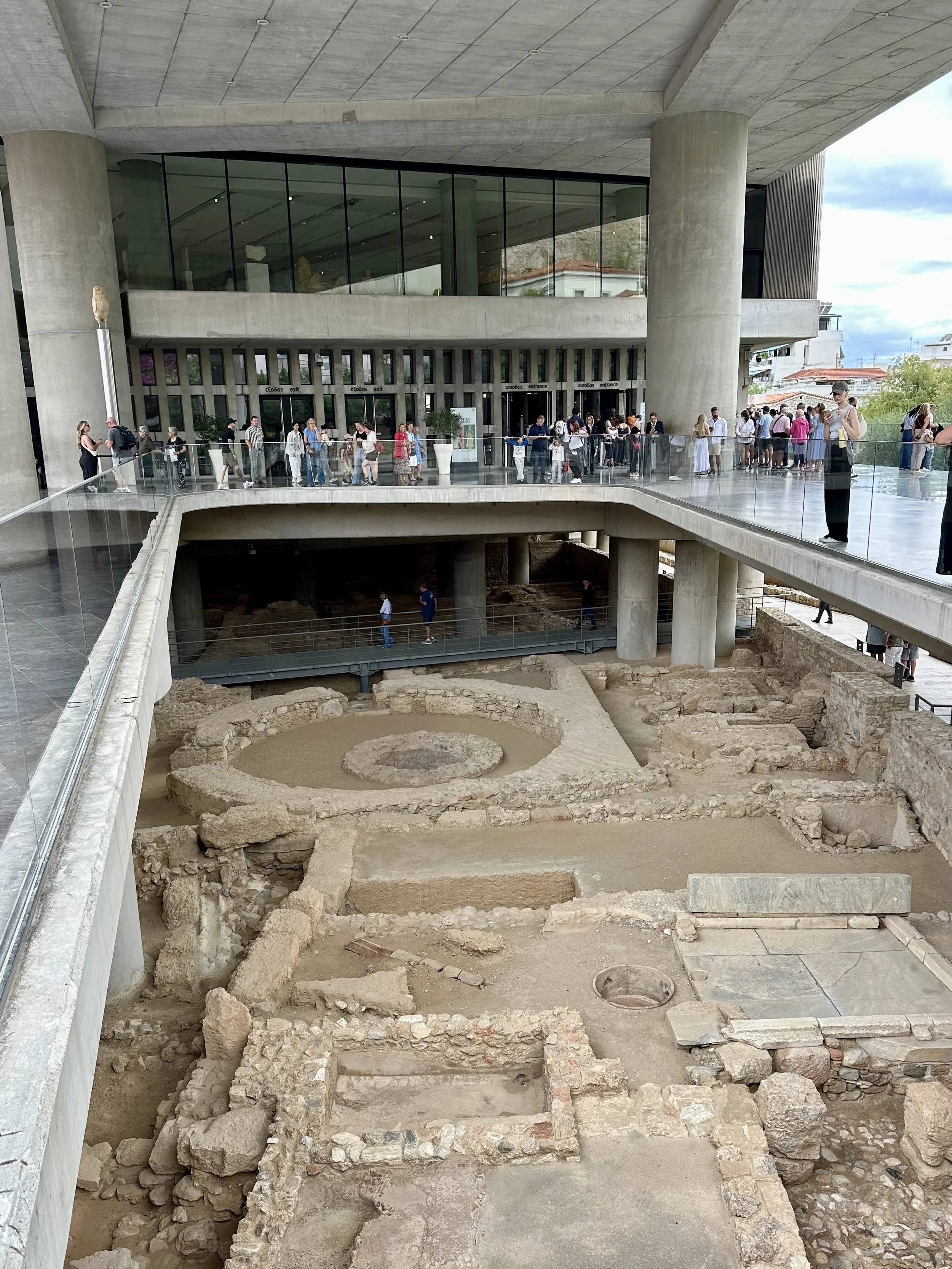Acropolis Museum
The Acropolis Museum was a Modernist building at the base of the Acropolis, right near the Akropoli Metro station. Outside, there were glass walkways over and around a large archaelogical site. The ruins were once Athenian sanctuaries and residences on the lower slopes of the Acropolis, and it was cool to see them beneath our feet.
Inside the museum entrance were scale models of the Acropolis through the centuries. The upper levels housed artifacts - mainly marble sculptures and fragments of pediments and columns - from the structures in the Acropolis.
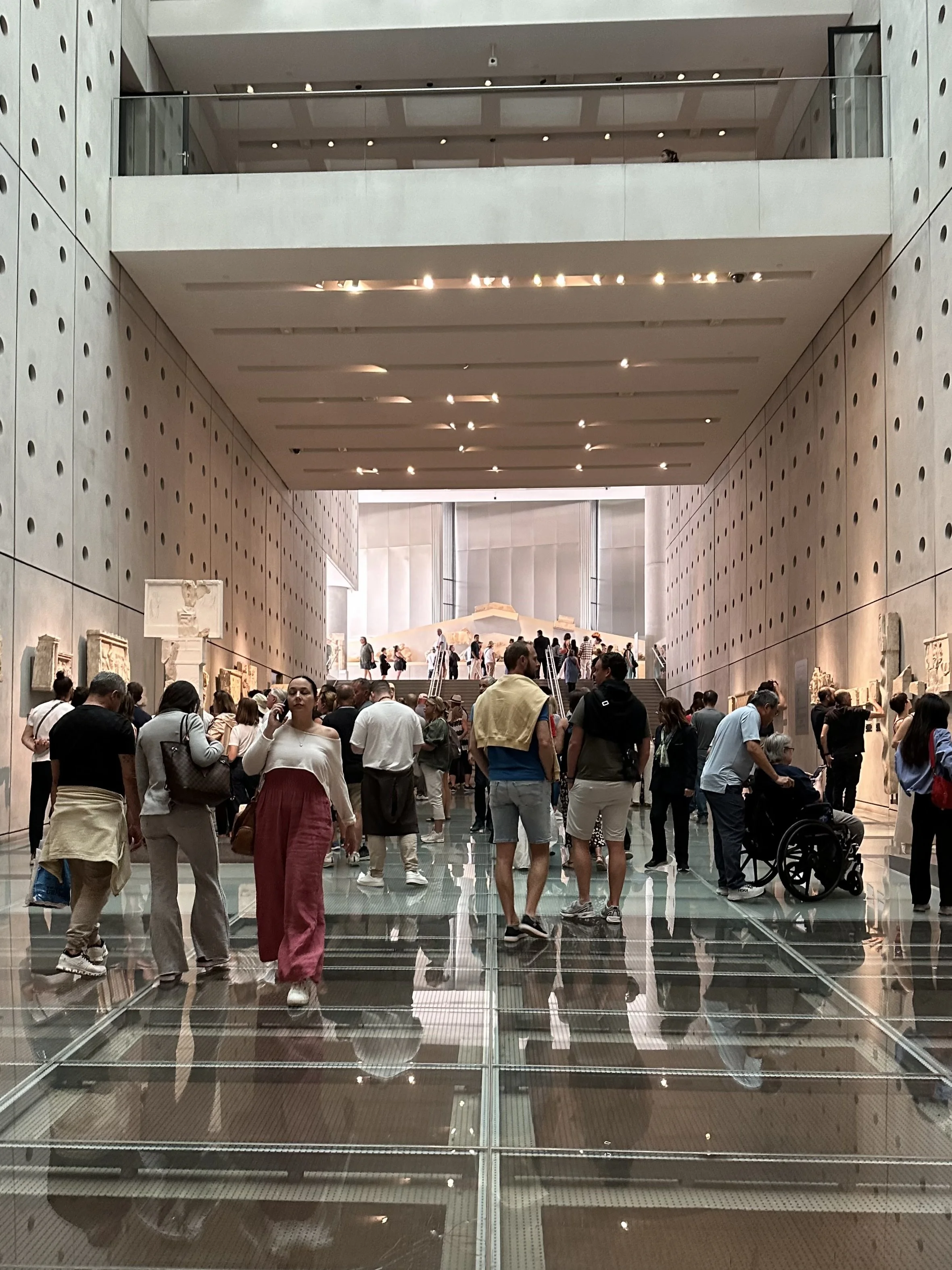
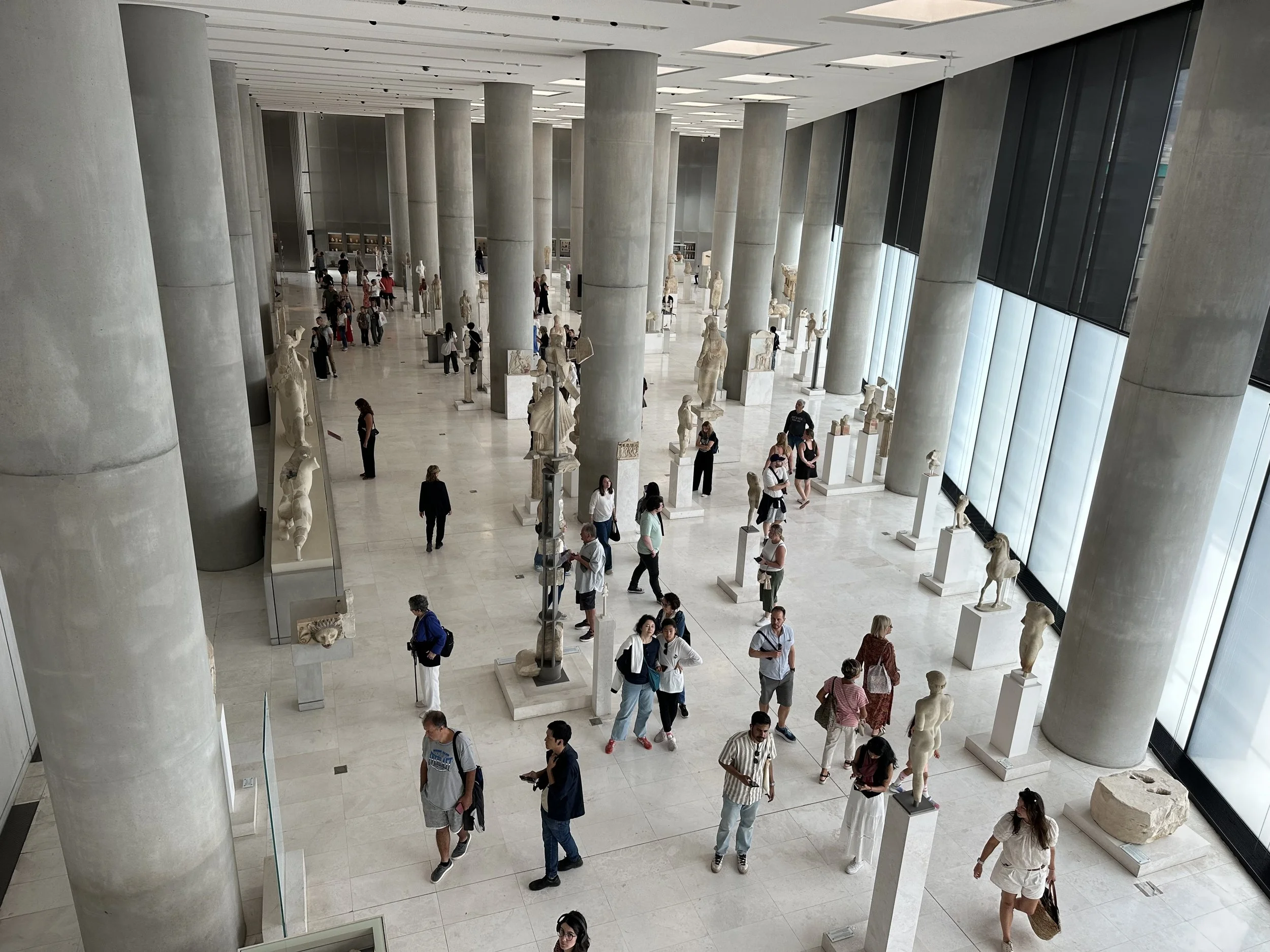
There were sculptures from the pediment of the Hetokampedon, a temple to Athena which is no longer standing. Built 570-550 BCE, it was demolished by the Athenians in 490 BCE in order to build a larger temple called the Older Parthenon. (That temple was destroyed by the Persians just ten years later.)
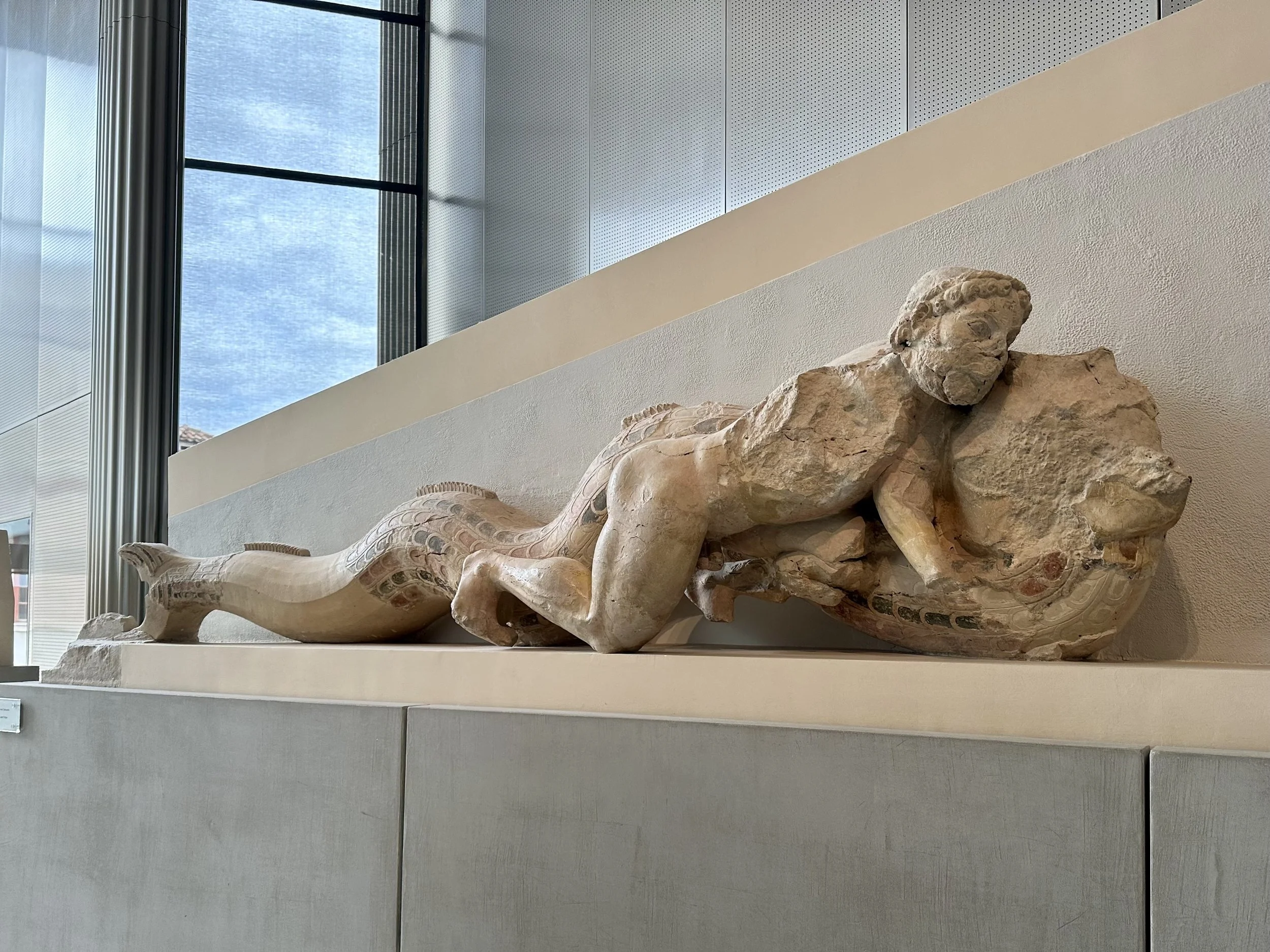
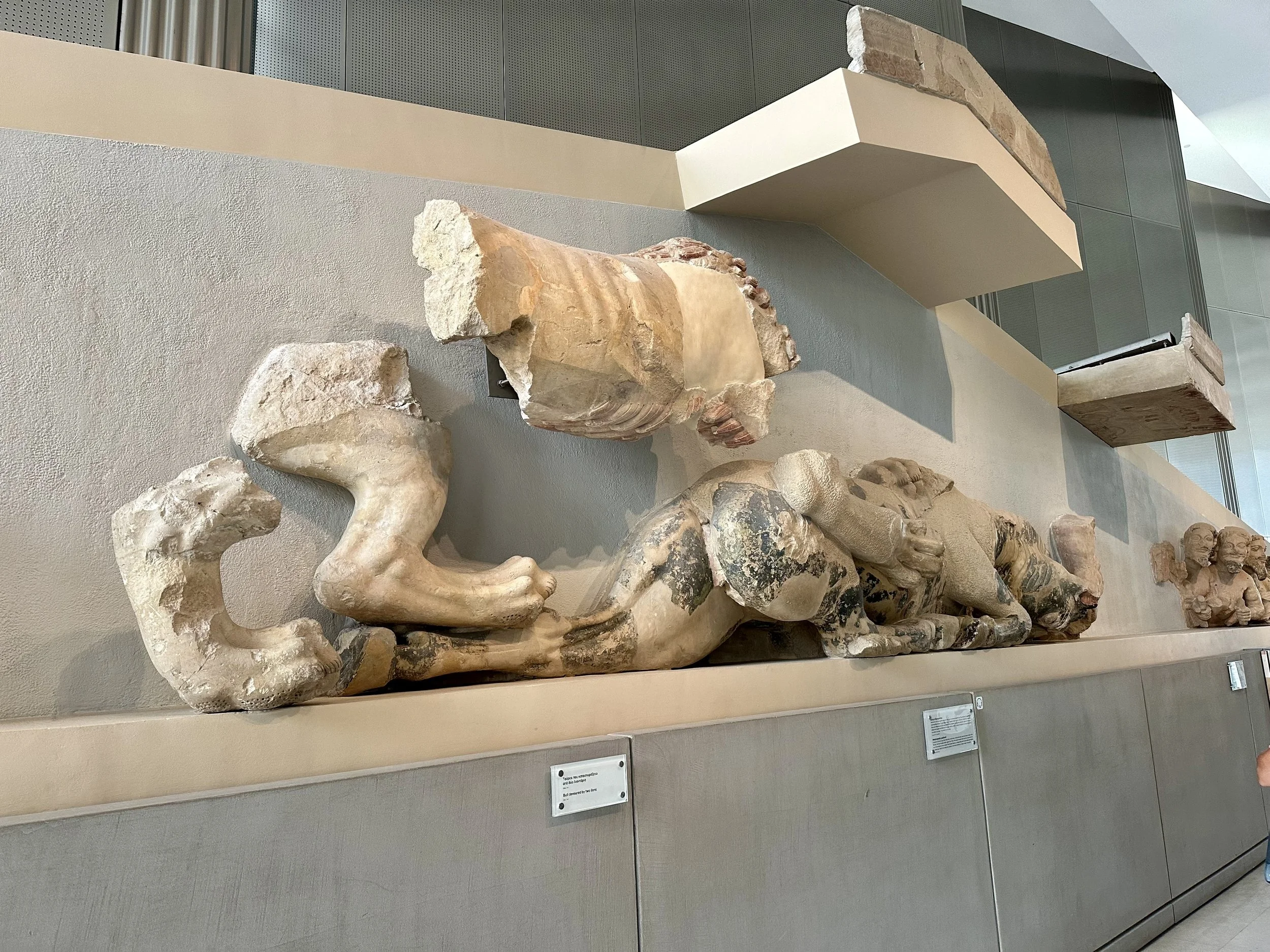
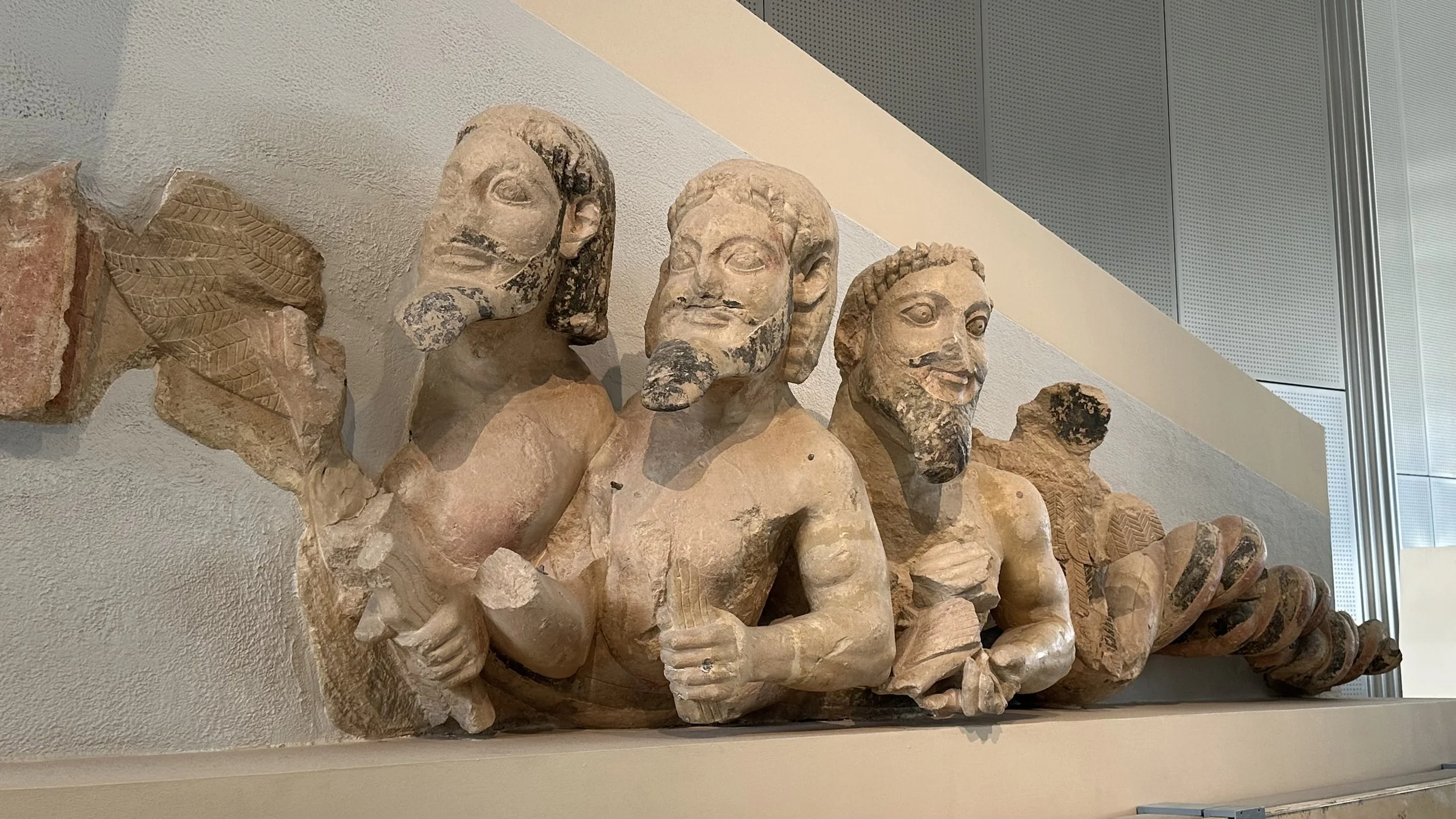
There were dozens of female figures called korai. An upper class Athenian family would present a kore as a votive offering to Athena, and to flaunt their wealth and status. Athena. Korai were often painted with bright pigments, and some had been retouched so we could imagine how they once looked. There were also many sculptures of Greek gods and goddesses, and friezes depicting stories from Greek mythology. I especially liked the marble tablets that were inscribed with detailed accounts of the construction costs for the Acropolis, so that all citizens could see how their elected officials were spending public funds. They were nice reminder that democracy was born here, in Athens.
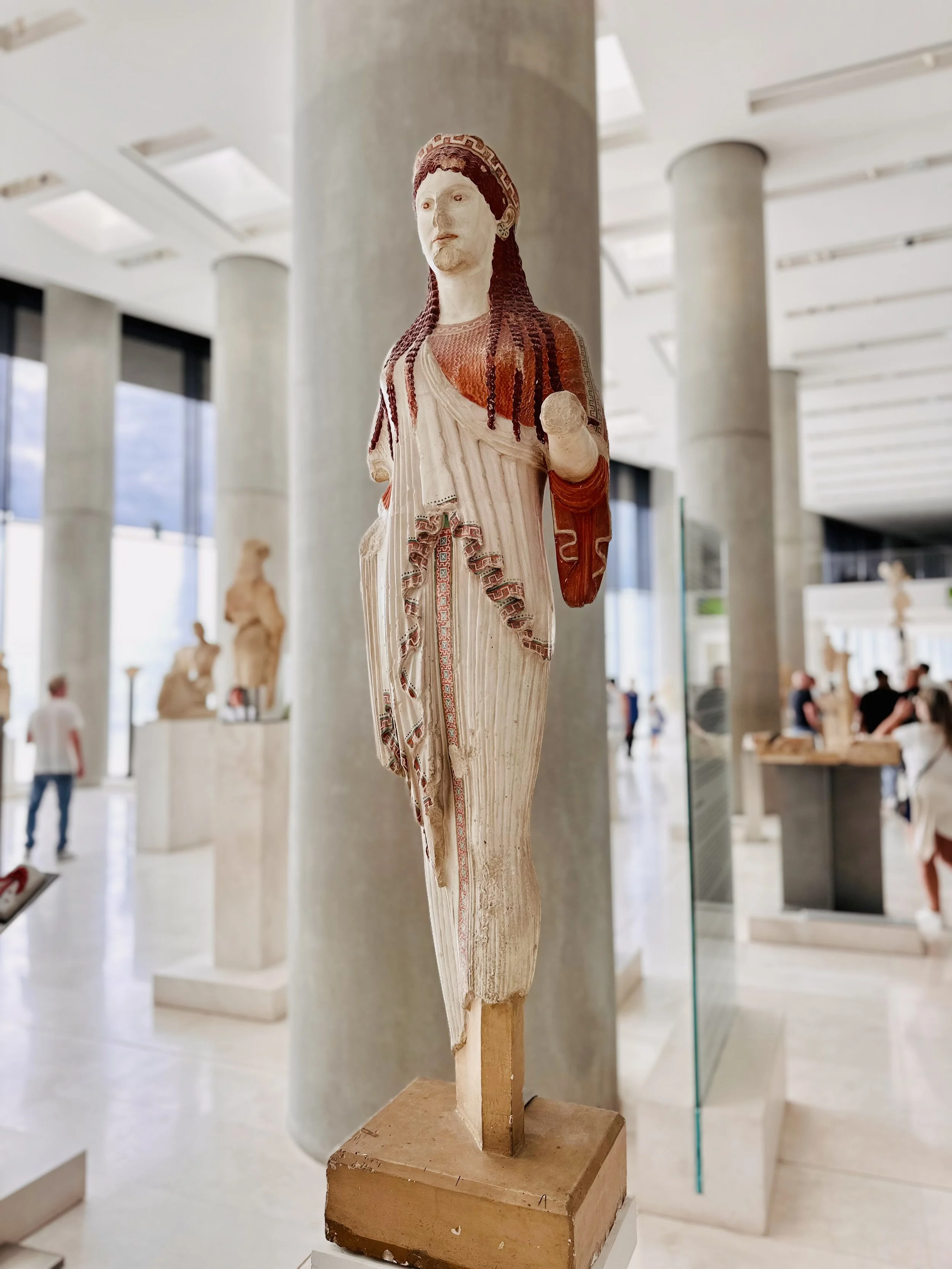
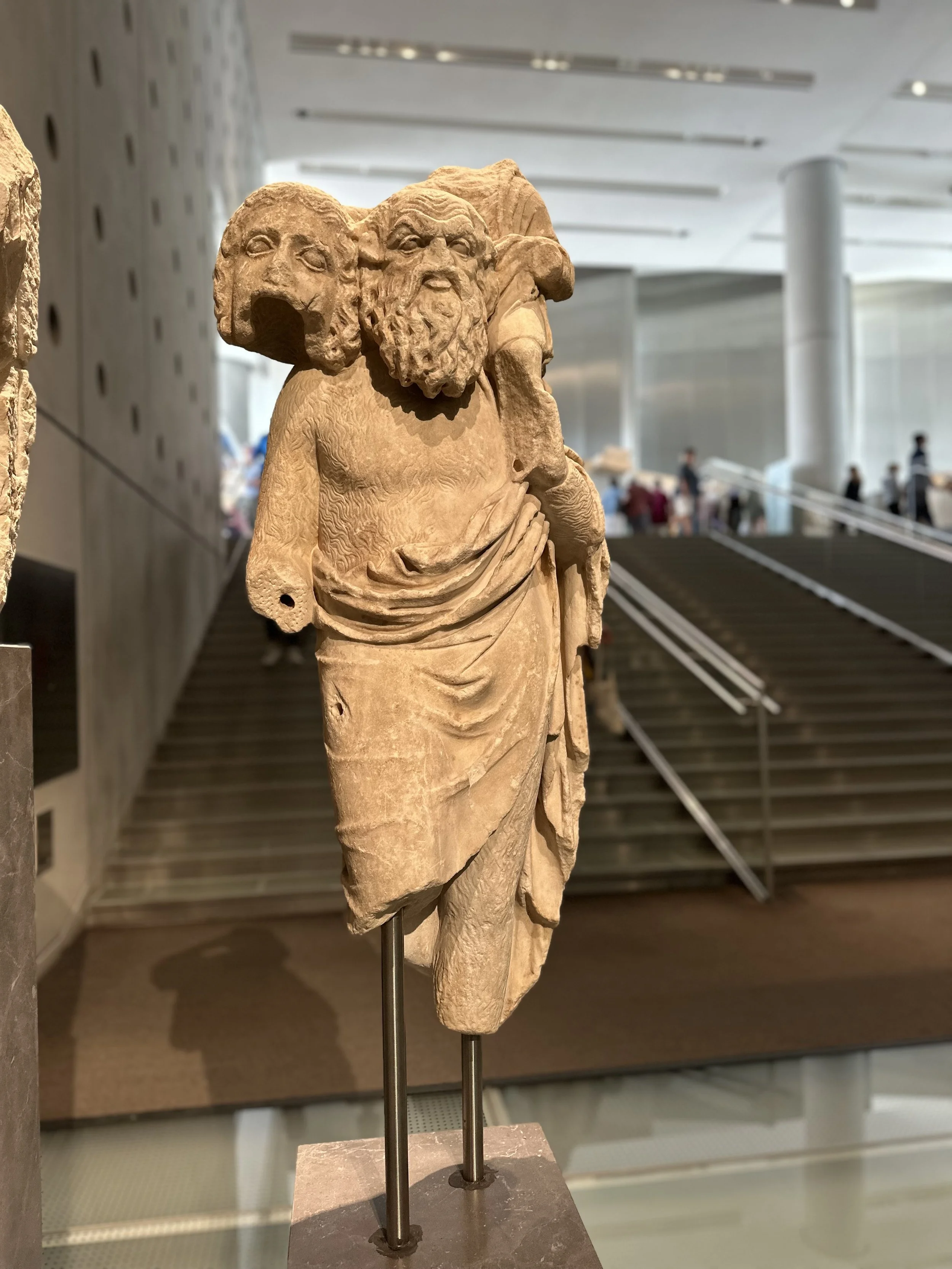
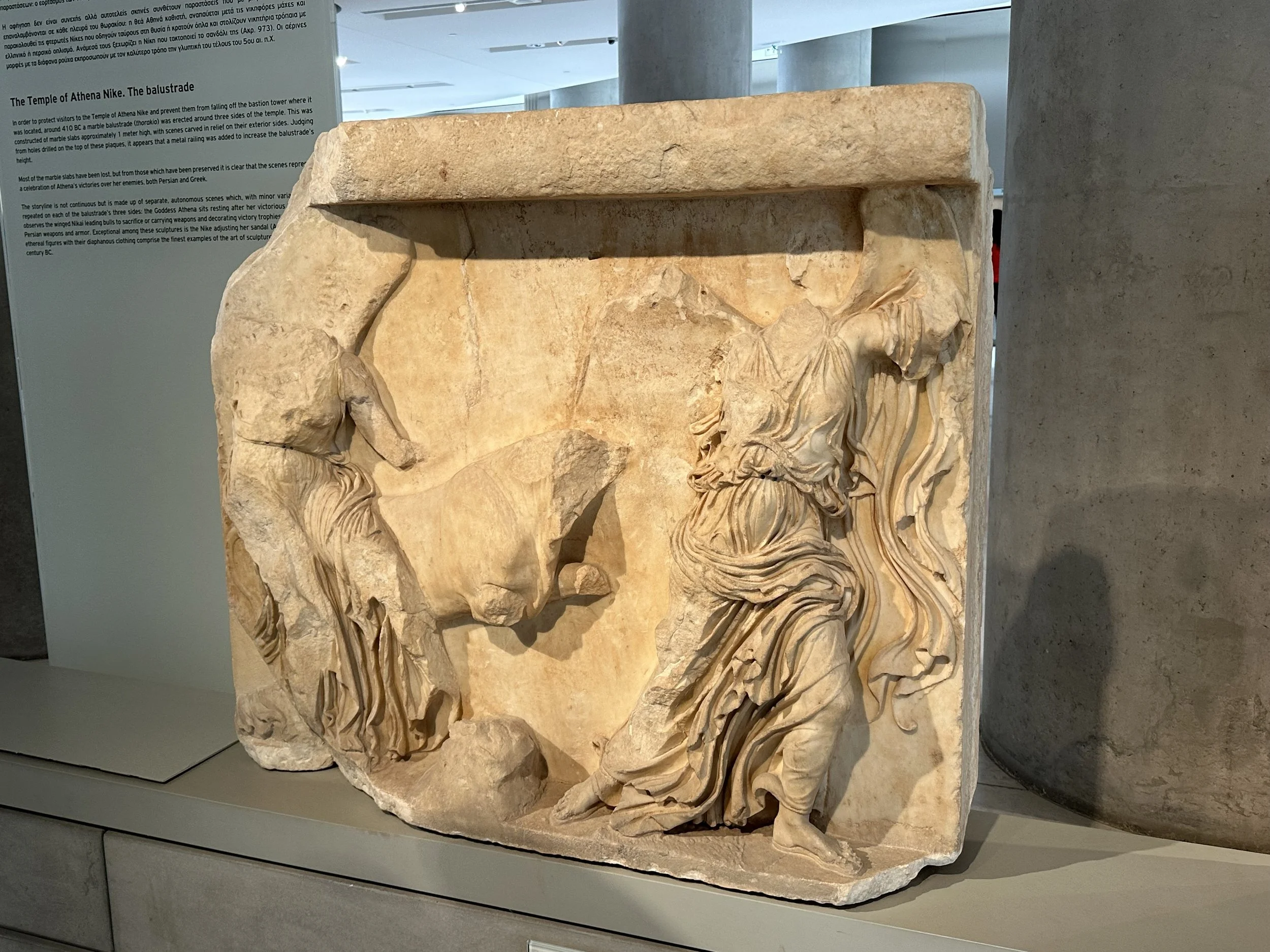
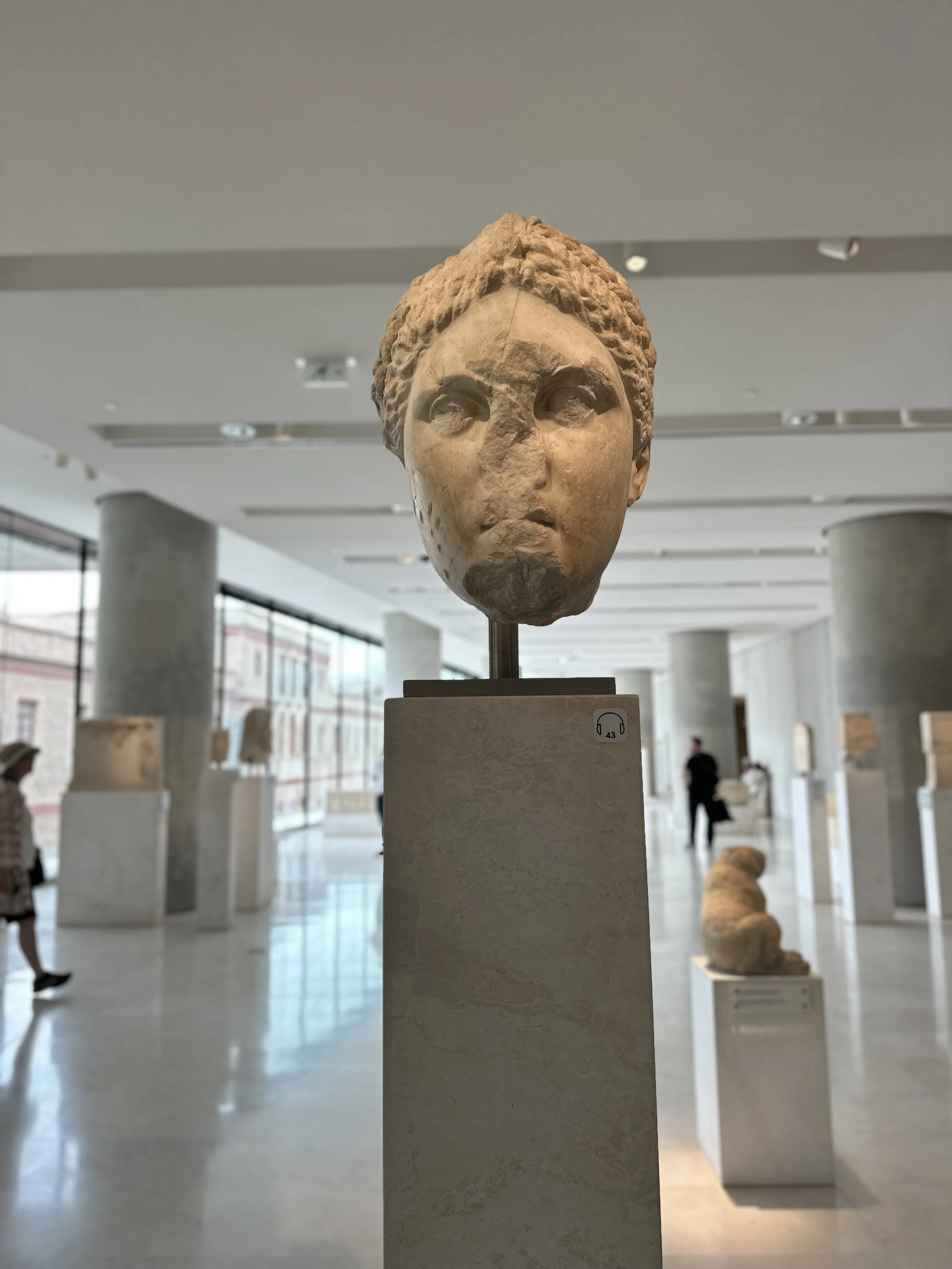
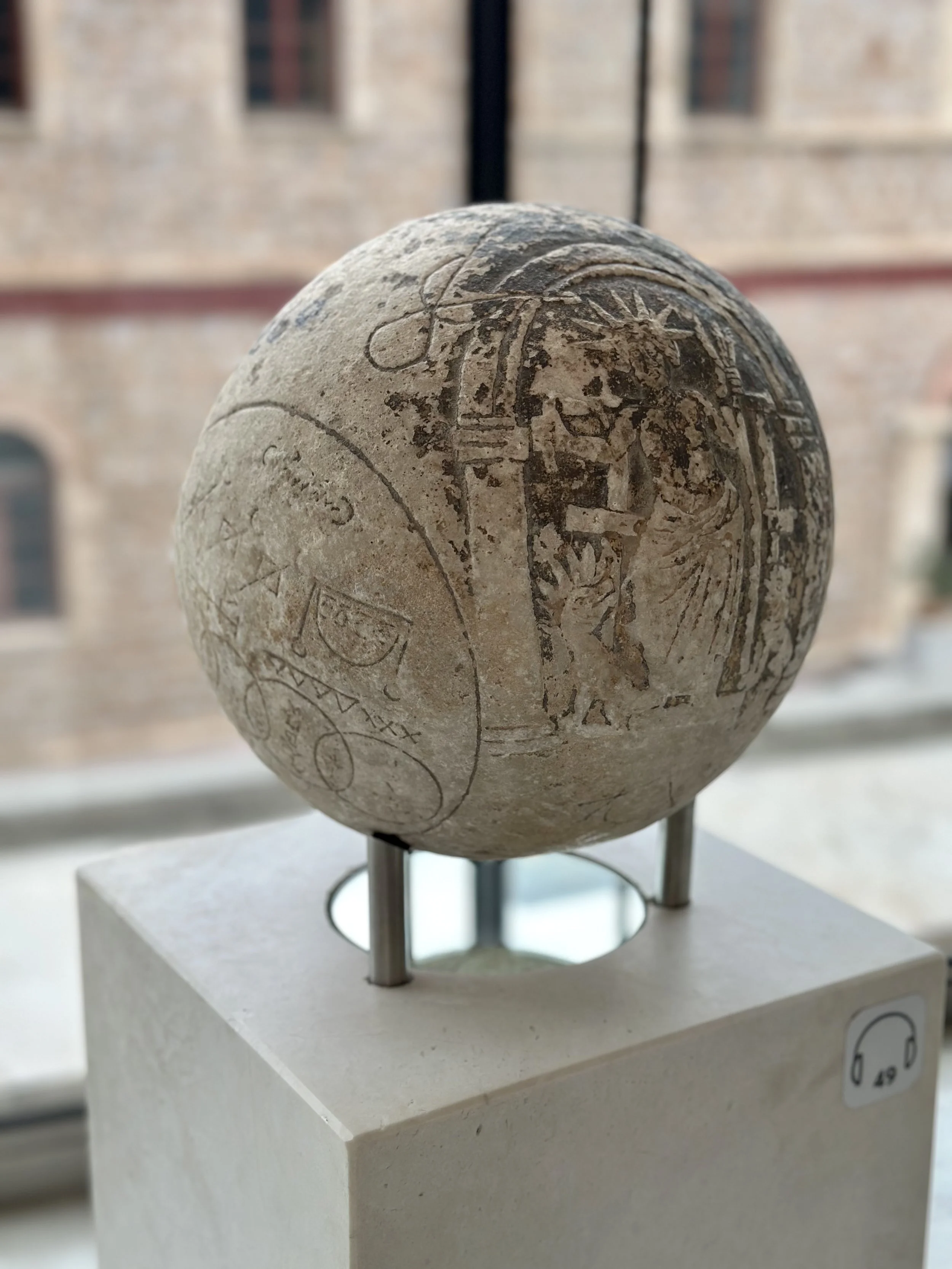
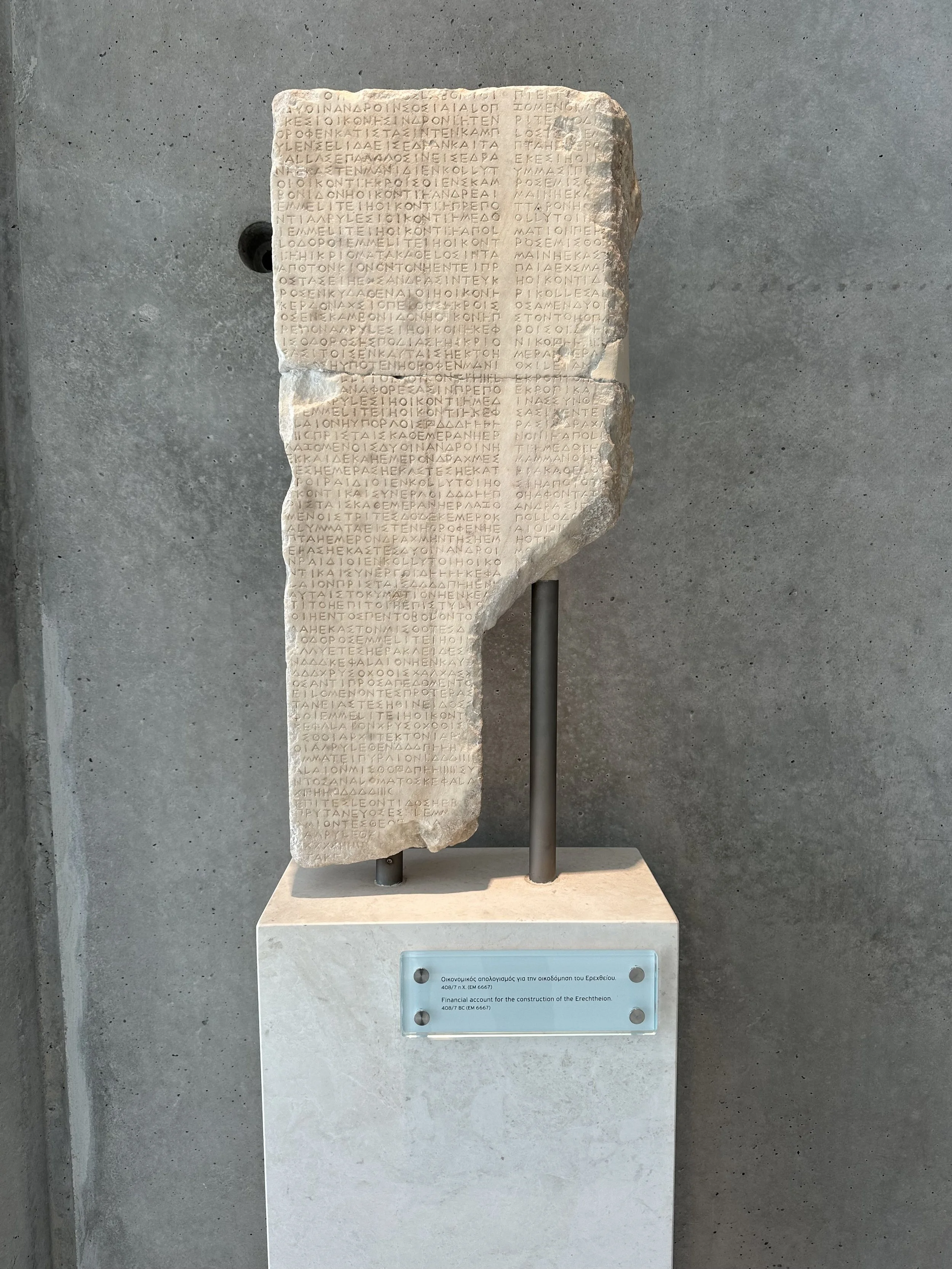
There was a collection of artifacts from the Erechtheion (Erechtheum), built 421-406 BCE. Despite being named for the king of Athens who founded the Acropolis and for the Greek god Poseidon, this was also a temple to Athena.
My favorites were the famous caryatids, the female figures that once stood on the porch of the Erechtheion, holding up the roof. I guess it’s no surprise I was intrigued by these strong, beautiful women! After more than 2,400 years, the detail of the caryatids was still wonderful; their long hair hung down their backs, with intricate braids and curls. These were the original caryatids, now relieved of their burden and sheltered from the elements (the caryatids up on the Acropolis are replicas). The sixth caryatid was conspicuously absent - she is at the British Museum in London. Will she someday be returned to Greece and reunited with her sisters?
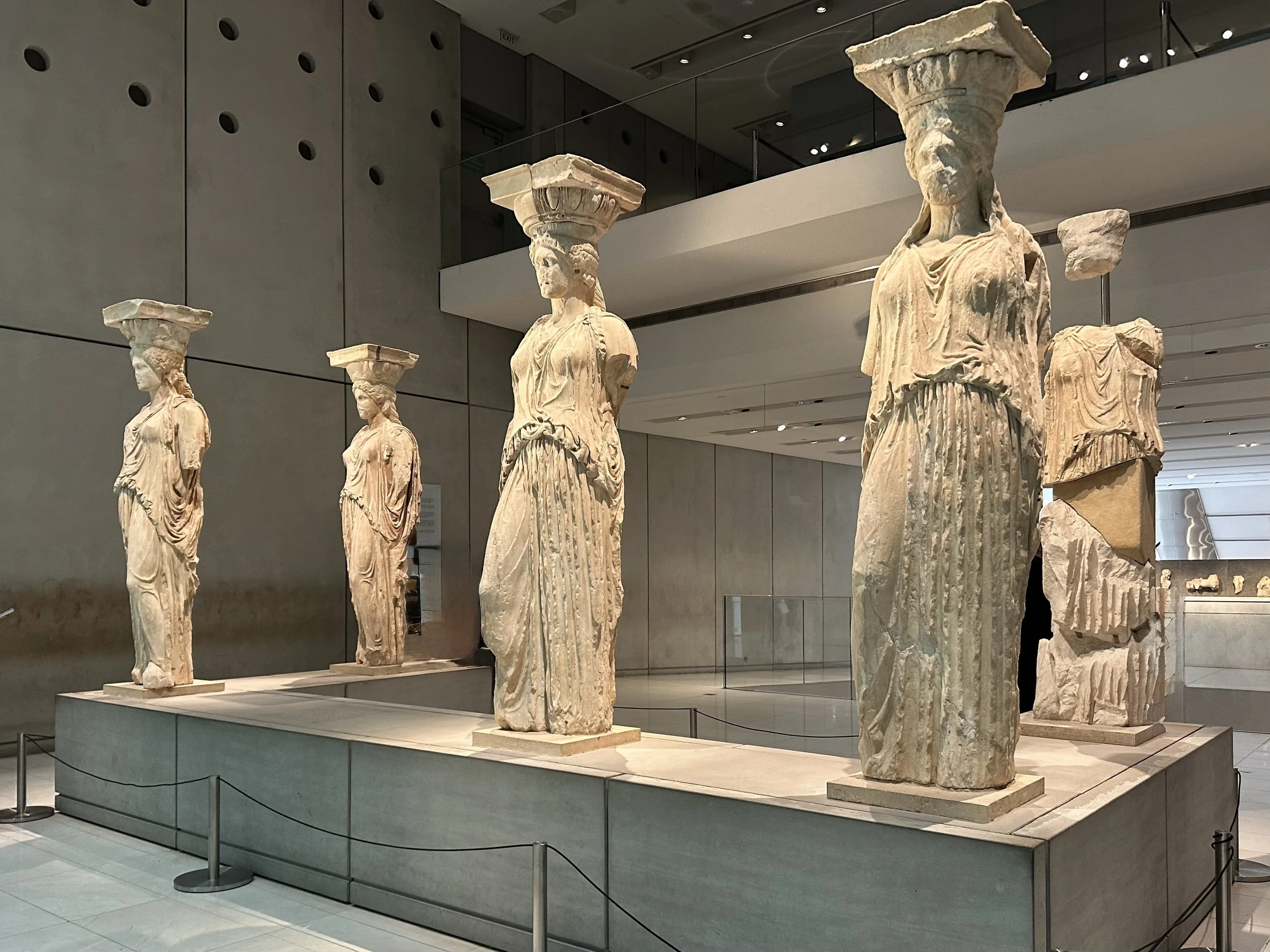
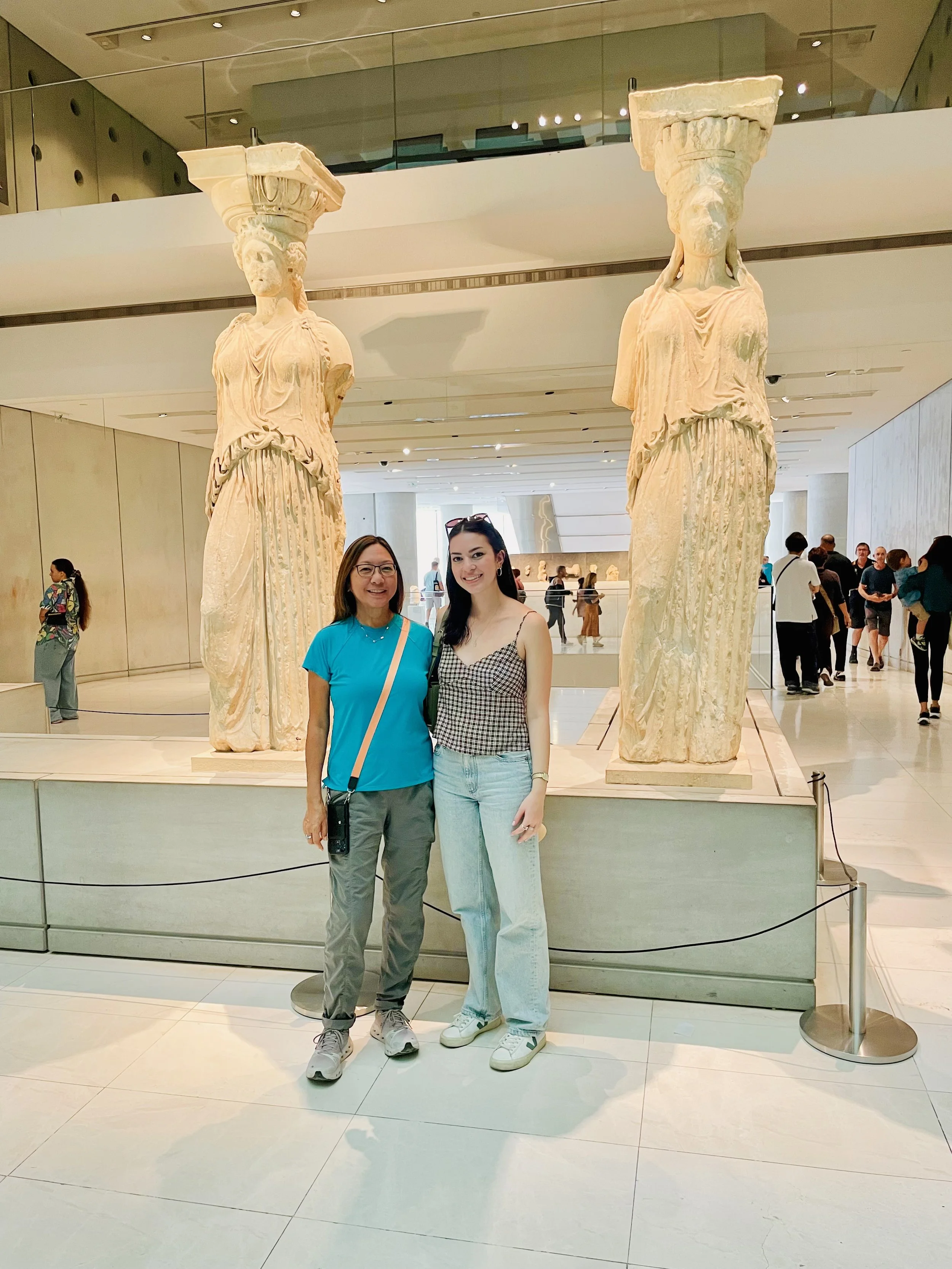
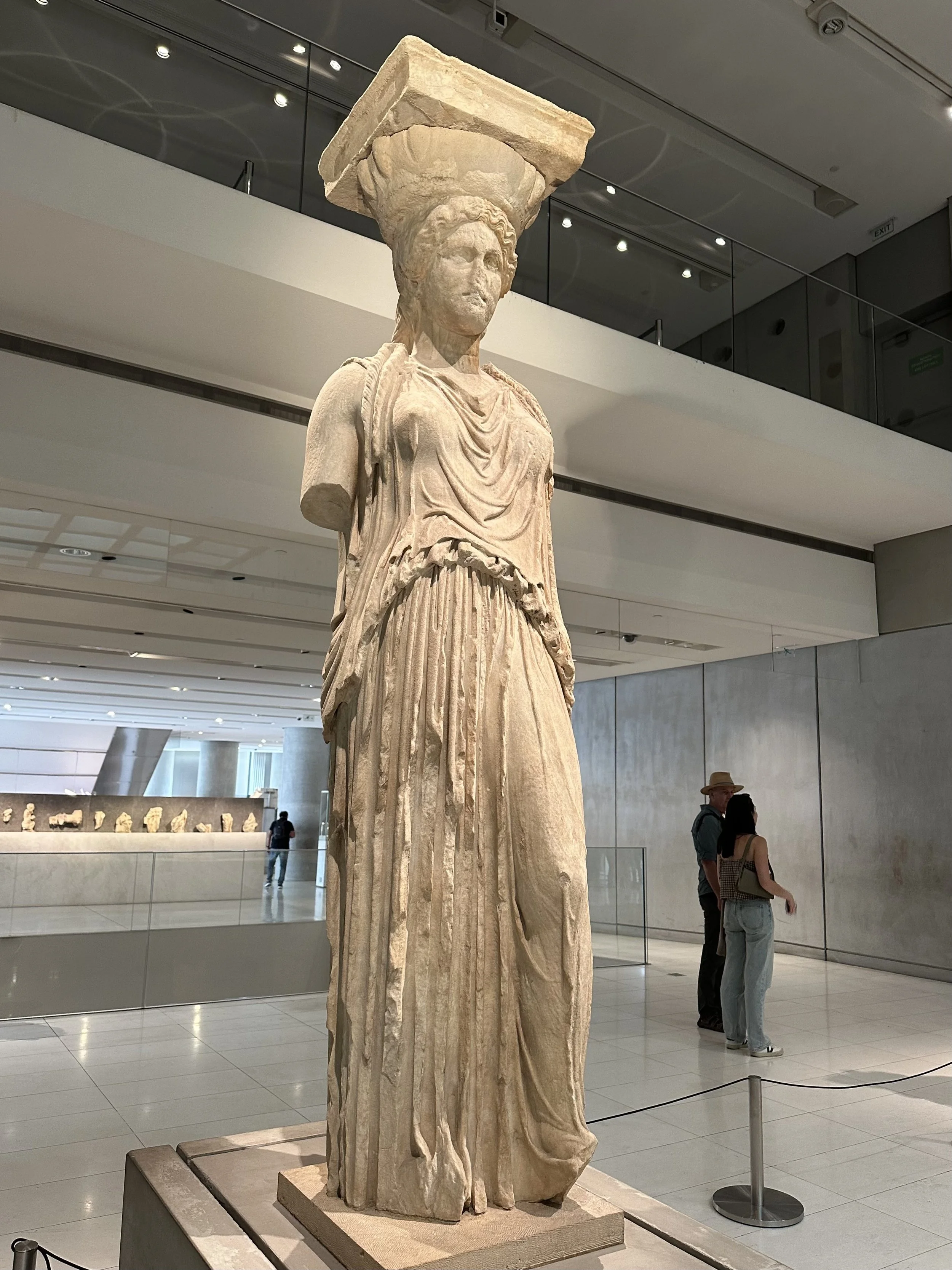
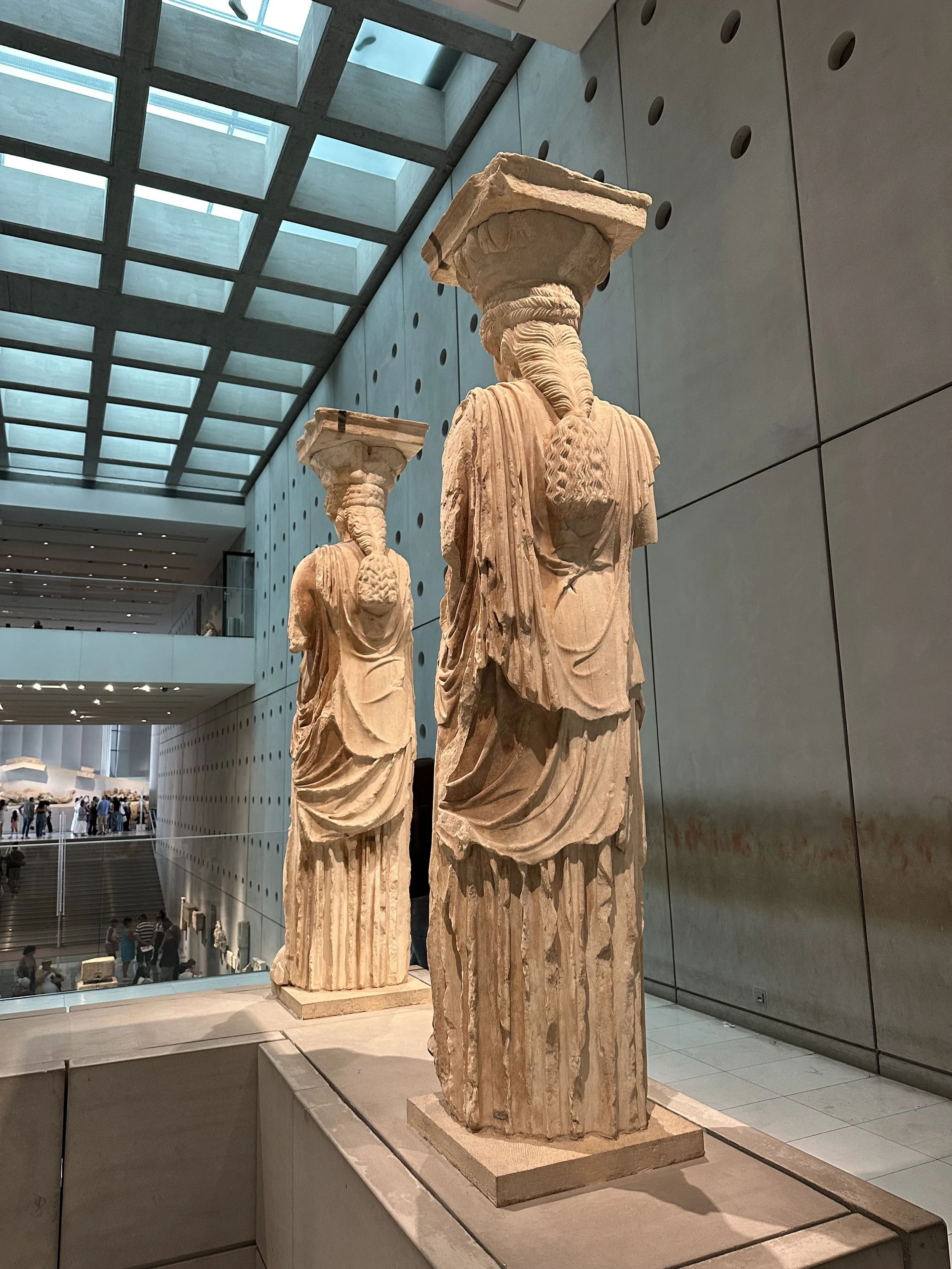
The highest level was all about the Parthenon. Modern columns and fragments of marble friezes were spaced according to the scale of the actual temple. Huge glass walls provided natural light and a view of the ancient Parthenon above.
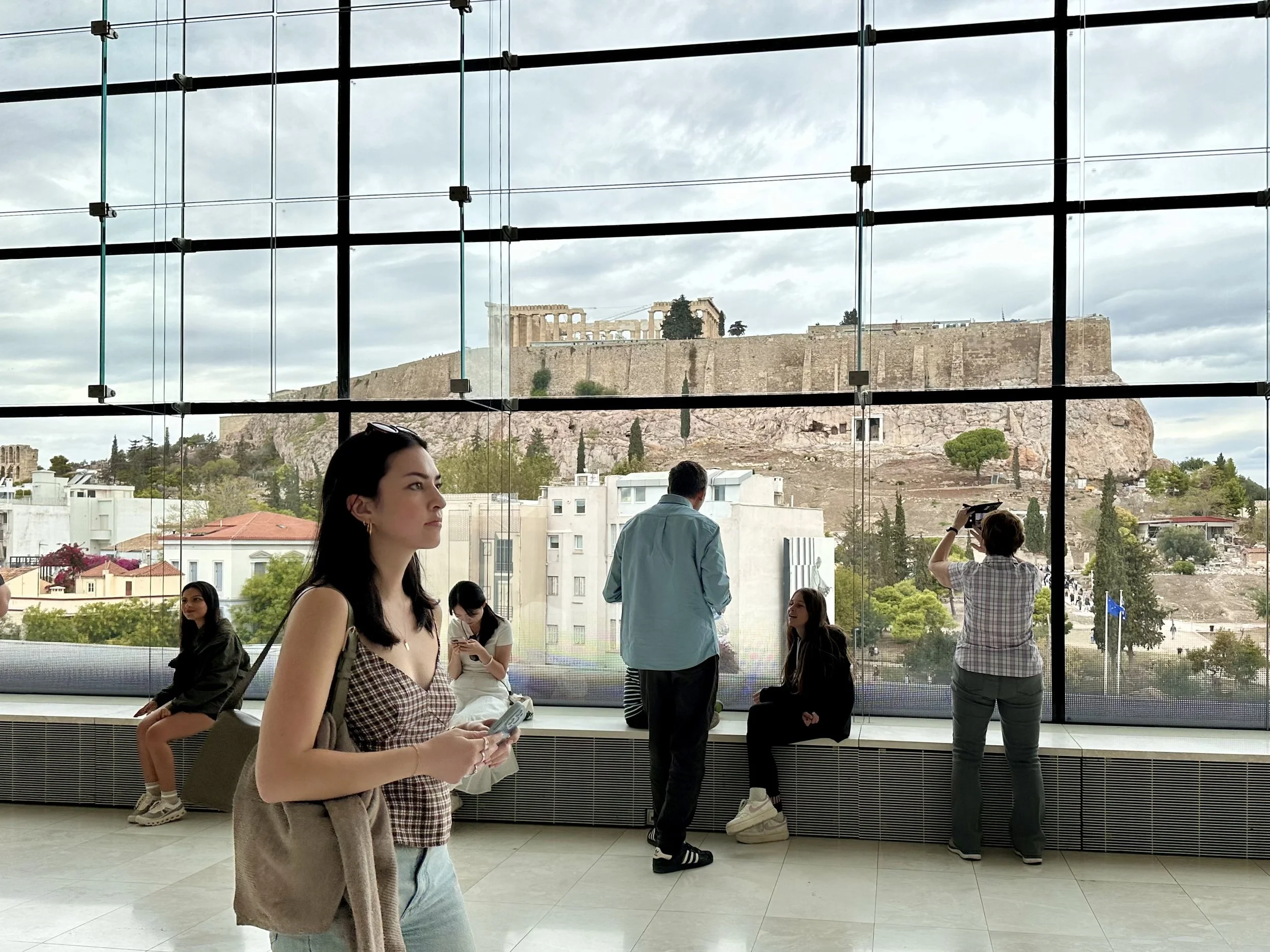
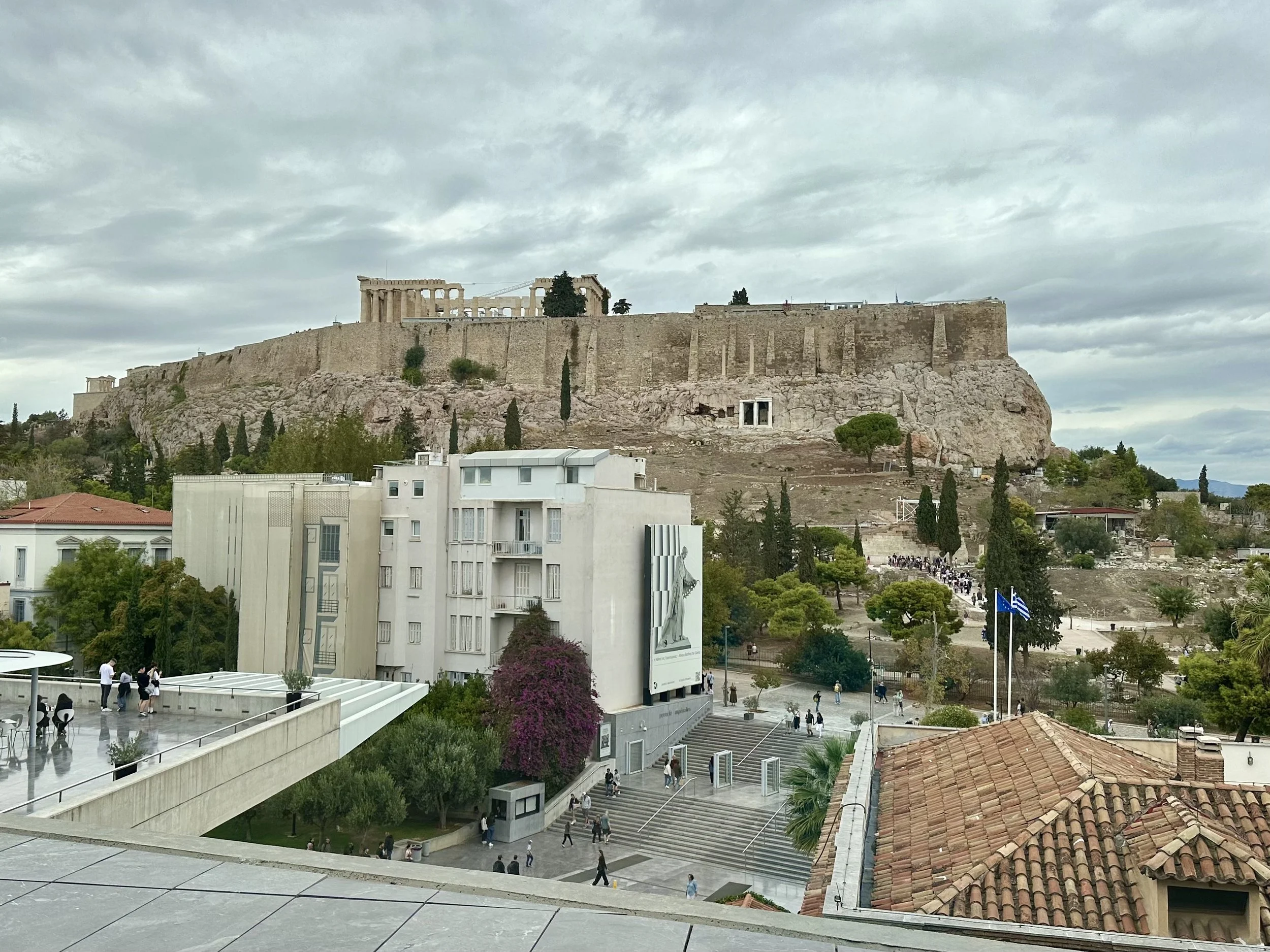
The Acropolis Museum was built to house all of the artifacts found on the Acropolis and the slopes surrounding it. It’s no wonder the museum and its collections were so massive! Honestly, after 90 minutes, all the dismembered statues and lonely stone heads started to look the same. As we say in our family, our eyes were full. It was time to meet our guide and go up to the Acropolis.
